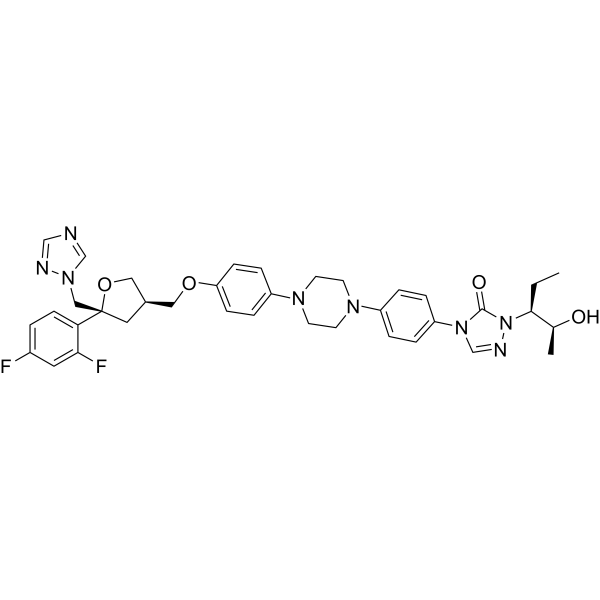Title:Amiodarone has intrinsic anti-Trypanosoma cruzi activity and acts synergistically with posaconazole
标题:胺碘酮具有内在的抗克鲁兹锥虫活性,并与泊沙康唑协同作用
Authors: Gustavo Benaim, John M. Sanders, Yael Garcia-Marchán, Claudia Colina, Renee Lira, Aura R. Caldera, Gilberto Payares, Cristina Sanoja, Juan Miguel Burgos, Annette Leon-Rossell, Juan Luis Concepción
作者:Gustavo Benaim, John M. Sanders, Yael Garcia-Marchán, Claudia Colina, Renee Lira, Aura R. Caldera, Gilberto Payares, Cristina Sanoja, Juan Miguel Burgos, Annette Leon-Rossell, Juan Luis Concepción
Journal: Journal of Medicinal Chemistry
期刊:药物化学杂志
Date: February 9, 2006
日期:2006年2月9日
Volume: 49
卷:49
Issue: 3
期:3
Pages: 892-899
页码:892-899
Introduction
Chagas disease, caused by the protozoan parasite Trypanosoma cruzi, remains a significant health challenge in Latin America. Current treatments, nifurtimox and benznidazole, have limited efficacy and notable side effects. This study explores the potential of the antiarrhythmic drug amiodarone and its synergistic effect with the antifungal drug posaconazole against T. cruzi.
简介
查加斯病是由原生动物寄生虫锥虫引起的,在拉丁美洲仍是一个重要的健康挑战。现有的治疗方法,如尼福尔莫克斯和苄硝唑,疗效有限且副作用显著。本研究探讨了抗心律失常药物胺碘酮及其与抗真菌药物泊沙康唑联合使用对锥虫的潜在作用。
Objective
The objective was to evaluate the intrinsic anti-T. cruzi activity of amiodarone and investigate its synergistic effect when combined with posaconazole.
目的
评估胺碘酮对锥虫的内在抗寄生虫活性,并研究其与泊沙康唑联合使用的协同效应。
Methodology
- In Vitro Assays: The antiparasitic activities of amiodarone and posaconazole, both alone and in combination, were assessed using in vitro assays.
- Biochemical Analysis: The mechanisms of action were studied by analyzing calcium homeostasis disruption and inhibition of ergosterol biosynthesis.
- Microscopy: Ultrastructural changes in T. cruzi were observed using electron microscopy.
方法
- 体外测定:评估胺碘酮和泊沙康唑单独及联合使用的抗寄生虫活性。
- 生化分析:通过分析钙稳态破坏和麦角固醇生物合成抑制来研究作用机制。
- 显微镜观察:通过电子显微镜观察锥虫的超微结构变化。
Results
- Antiparasitic Activity: Amiodarone exhibited significant intrinsic activity against T. cruzi.
- Synergistic Effect: The combination of amiodarone and posaconazole showed a synergistic effect, leading to enhanced antiparasitic activity.
- Mechanism of Action: Amiodarone disrupted calcium homeostasis and inhibited oxidosqualene cyclase, leading to structural damage in T. cruzi.
结果
- 抗寄生虫活性:胺碘酮对锥虫显示出显著的内在活性。
- 协同效应:胺碘酮与泊沙康唑联合使用表现出协同效应,增强了抗寄生虫活性。
- 作用机制:胺碘酮破坏了钙稳态并抑制了氧化鲨烯环化酶,导致锥虫结构损伤。
Conclusion
The study demonstrated that amiodarone, either alone or in combination with posaconazole, could serve as an effective treatment for Chagas disease. These findings highlight the potential for repurposing existing drugs to address parasitic infections.
结论
研究表明,胺碘酮单独或与泊沙康唑联合使用,可以作为查加斯病的有效治疗方法。这些发现突显了重新利用现有药物以解决寄生虫感染的潜力。
根据Benaim等人在2006年发表的研究,以下是与该文献相关的一些化合物及其CAS号:
- Amiodarone (胺碘酮) - CAS# 1951-25-3
- Posaconazole (泊沙康唑) - CAS# 171228-49-2






 沪公网安备31011402010657号
沪公网安备31011402010657号